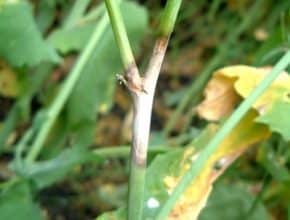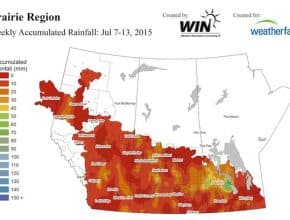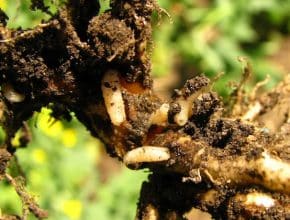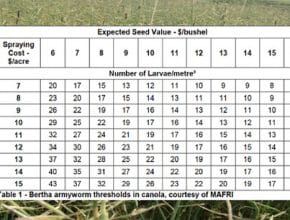Home / Canola Watch / July 15, 2015 - Issue 17
-
This quiz can help you assess the sclerotinia stem rot risk in canola fields…
-
-
Scattered rain with more in the forecast will have growers wondering this week whether to spray fungicide to manage sclerotinia stem rot. Moisture is the key risk factor for sclerotinia stem rot. Without moisture a couple of weeks before flowering and humidity during and after flowering, disease severity and the return on investment from fungicide will be lower than if…
-
Lots of insects are being reported, but agronomists and growers are generally doing a good job of assessing the economic threat and determining that most situations this week do not require a spray. Given the patchy nature of most insect patterns, all fields should be checked. If something is spotted that may be above thresholds, check a few areas of…
-
Canada exports 90% of the canola we produce, and our global customers won’t accept anything less than squeaky-clean seed. This time of year, the keys are to ensure a crop protection product applied won’t cause concern for canola exporters, and to know a product's required interval between application and swathing…
-
While insects are not a major threat in most fields at this point in 2014, diamondback moth larvae are around, cabbage seedpod weevil are still laying eggs, and bertha armyworm larvae have been found in some locations — although at very low levels for the most part. (See the Map of the Week.) Here is a review of thresholds for…
-
As canola starts to move from flowering and into pod formation, growers will often notice blanks up the raceme where pods did not form. Here are 7 possible reasons…





